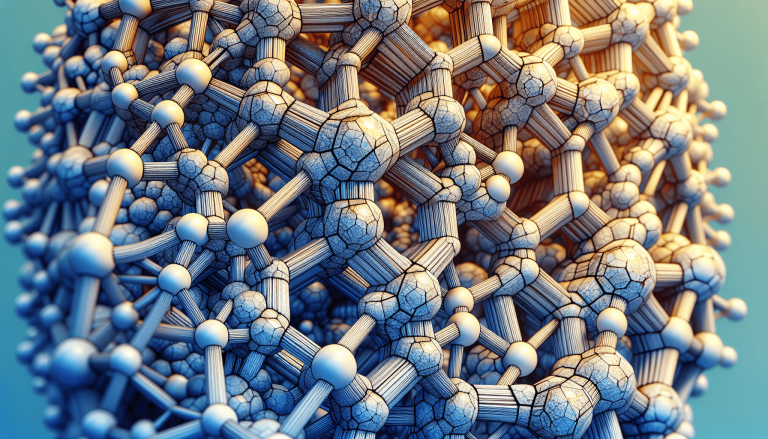Understanding The Relationship Between Mineral Structure And Chemical Properties
So, you’ve always been curious about how minerals possess certain chemical properties and what role their structure plays in it, huh? Well, you’re in luck because today we’re going to dive right into that fascinating topic. In this article, we’ll explore the intricate connection between mineral structure and chemical properties, unraveling the mysteries behind why certain minerals react the way they do. Get ready to embark on a journey of discovery as we uncover the secrets hidden within the molecular framework of minerals and their impact on their chemical behavior. Buckle up, because this is going to be an eye-opening ride!

Introduction
The relationship between mineral structure and chemical properties is an essential concept in the field of earth sciences. Minerals, as naturally occurring inorganic substances, possess unique atomic arrangements and chemical compositions that directly influence their physical and chemical behavior. By exploring the intricacies of mineral structure, crystal lattice, atomic arrangement, mineral cleavage, chemical composition, bonding, polymerization, isomorphism, and mineral surfaces, we can gain valuable insights into how these aspects ultimately shape the chemical properties exhibited by minerals.
Mineral Structure
Mineral Structure refers to the arrangement of atoms in a mineral’s crystalline or amorphous form. Crystalline structures are highly ordered, repeating patterns of atoms, resulting in the formation of well-defined crystals. On the other hand, amorphous structures lack long-range order, giving rise to irregular and non-repetitive atomic arrangements. The structural characteristics of a mineral significantly affect its physical properties, such as hardness, density, and optical properties.
Crystal Lattice
A crystal lattice can be defined as the repeating arrangement of atoms within a crystal structure. It consists of a three-dimensional framework formed by lattice points, which represent individual atoms or groups of atoms. The components of a crystal lattice include the unit cell, which is the smallest repeating unit of the lattice, and lattice vectors, which represent the translation needed to recreate the crystal structure. Different types of crystal lattices include cubic, tetragonal, orthorhombic, monoclinic, and triclinic. The specific crystal lattice exhibited by a mineral can have a profound impact on its chemical properties, affecting phenomena such as mineral cleavage, thermal conductivity, and electrical conductivity.

Atomic Arrangement
The atomic arrangement within a mineral refers to the specific positioning of atoms or ions within its crystal lattice. Primary atomic arrangements include close-packed structures, such as cubic close-packing (CCP) and hexagonal close-packing (HCP). These arrangements lead to the formation of distinct layers of atoms, resulting in characteristic crystallographic planes. Other types of atomic arrangements include body-centered cubic (BCC) and face-centered cubic (FCC). The specific atomic arrangement within a mineral can greatly influence its chemical properties, such as solubility, reactivity, and thermal stability.
Mineral Cleavage
Mineral cleavage refers to the tendency of minerals to break along specific planes, resulting in smooth and flat surfaces. It is primarily determined by the atomic arrangement within a mineral and can vary greatly between different minerals. The characteristics of mineral cleavage, such as the number and orientation of cleavage planes, directly impact the mineral’s physical and chemical properties. For example, minerals with perfect cleavage may exhibit distinct cleavage patterns when subjected to external forces, signifying differences in their chemical reactivity and mechanical strength.
Chemical Composition
The chemical composition of a mineral refers to the elements and compounds present within its structure. Minerals can consist of various combinations of elements, forming complex chemical formulas. The relationship between chemical composition and mineral structure is a fundamental concept in crystallography. Certain elements or compounds within a mineral can significantly influence its physical and chemical properties. For instance, the presence of certain metallic elements can impart conductivity to a mineral, while different ratios of elements can result in variations in color and hardness.
Bonding in Minerals
The bonding in minerals refers to the forces that hold the atoms or ions together within their crystal lattice. Different types of chemical bonds can exist within minerals, including ionic bonds, covalent bonds, metallic bonds, and van der Waals forces. The type of bonding within a mineral strongly influences its physical and chemical properties. For example, minerals with predominantly ionic bonding tend to have distinct electrical conductivity, while covalent bonds contribute to the hardness and chemical stability of a mineral.
Polymerization
Polymerization in minerals refers to the process of linking multiple atomic units together to form larger molecular structures within the crystal lattice. This phenomenon can occur through various mechanisms, such as the sharing of atoms or the formation of chemical bonds. Polymerization can significantly impact the mineral structure and chemical properties, leading to alterations in hardness, stability, and reactivity. The degree of polymerization within a mineral can vary, resulting in variations in physical and chemical behavior.
Isomorphism
Isomorphism in minerals refers to the ability of different minerals to have similar crystal structures while containing different chemical elements. This phenomenon arises due to the similarities in atomic arrangement and bonding between different minerals. Isomorphism can strongly influence the physical and chemical properties of minerals, as the substitution of different elements within the crystal lattice can lead to variations in color, hardness, and chemical reactivity. The concept of isomorphism is crucial in understanding the diversity and complexity of mineral structures.
Mineral Surfaces
Mineral surfaces play a significant role in determining the chemical reactivity of minerals. The characteristics of mineral surfaces, such as their composition and structure, can influence interactions with other substances, including gases, liquids, and other minerals. The reactivity of mineral surfaces can be observed in processes such as adsorption, dissolution, and oxidation. The surface area and surface energy of minerals also play vital roles in chemical reactions occurring on the mineral’s surface. Understanding the properties of mineral surfaces is essential in studying geological processes, environmental interactions, and various industrial applications.
In conclusion, the relationship between mineral structure and chemical properties is a complex and fascinating field of study. The structural characteristics, atomic arrangement, cleavage, chemical composition, bonding, polymerization, isomorphism, and mineral surfaces all play crucial roles in determining the physical and chemical properties exhibited by different minerals. By delving into these aspects, scientists and researchers can gain a deeper understanding of minerals and their behavior in various geological and environmental contexts.







